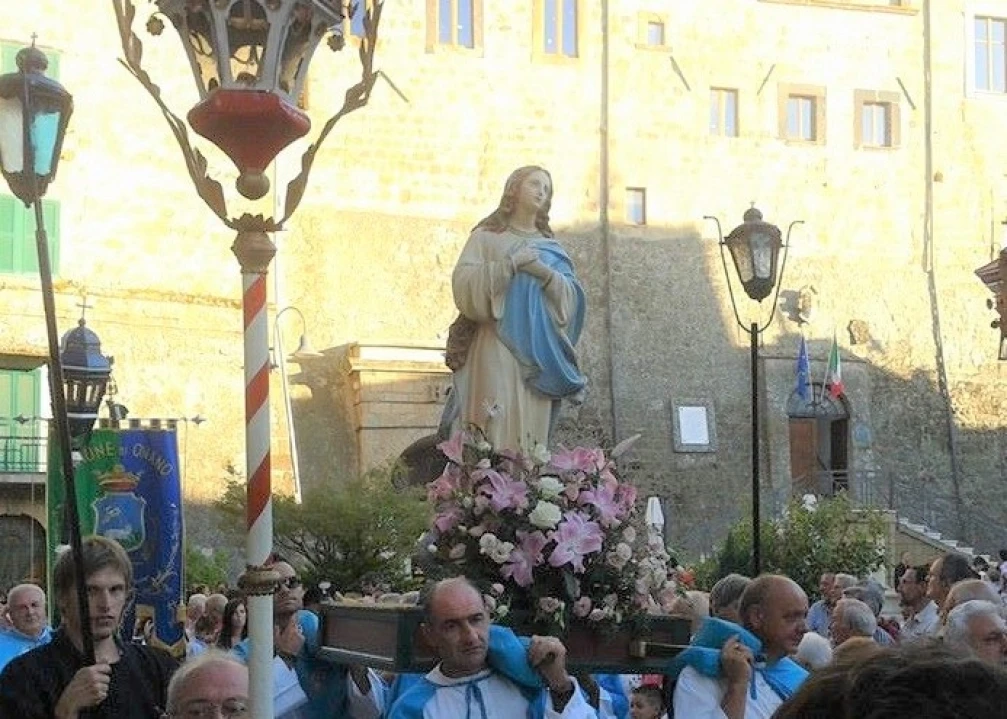Understanding today's traditions, festivals, ceremonies, religious recurrences, is not only a strictly individual knowledge or an intellectual enrichment, but it is above all understanding rituals and previous cultic activities. The whole sphere referring to anthropological-religious activities are nothing but that useful baggage of a deeper knowledge of ancient peoples.
We know that history, especially archaic history, rests its course on a typically religious track, indeed all ancient history walks and moves on this line. We see how the description of history becomes sometimes a science dictated only by a scientific discipline, neglecting the importance of the "sacred science".
The popular traditions of festivals, with their recurrences, are the "historical memory" of a people. Religious festivals with all its baggage of rituals are nothing but "archaeological" living testimony, from which we are faithfully transmitted the cultic activities of the past. In the agrarian and religious traditions and manifestations, a fundamental element is the discourse related to wheat, flour, bread. In the territory of Lake Bolsena, in the Lazio region, there are in August important festivals.
Once this activity of agrarian cult was exercised around Lake Bolsena in 7 municipalities (Marta, Valentano, Latera, Grotte di Castro, Onano, Proceno, Fastello). Two important examples linked to pagan symbolism are the cookie in the shape of the snake eating its tail in Marta and the feast in Onano that symbolize the eternal return of everything.
The feast of Our Lady of the Assumption of Onano is celebrated every year on the day of the Assumption, August 15. The morning of August 14 sees the children of the village parade with cookies hanging from their necks. Traditionally they have two shapes, pupe (in the shape of a female figure) and cavalli or cavalle (in the shape of horses and mares). Sometimes with the leftovers of the dough are also made other figures of various shapes (snakes, birds, etc..). The cookie today is produced by the ovens of the country, with some rare exceptions, while in the past was made regularly at home. During the procession of the Assumption, the cookies are carried by the children of the country hung around their necks with a red ribbon and consumed at the end of the procession by the children themselves. The males carry in procession the mares, the females carry the pupae.
Over time, the shape of the cookies has changed. The shape made by the bakers is different from the one that is still made at home by some elderly women. The bakers use molds and put less care in decorating the cookie which is done very quickly compared to the homemade process. The main change is about the head of the pupa which, whereas in the past had a sort of bonnet, today has hair instead.
Even the horses and the mares has some variations. In the most "ancient" versions of difficult interpretation they had a triangular belly that touched the ground, while today this triangular belly has disappeared and the cookie has the shape of a normal horse. Eyes and mouth of the figures are made with grains and lentils. In the past for the eyes of the pupa was used a seed that was found in the countryside, of a shiny black color that was called the eye of the pupa. Today this seed cannot be found anymore. The decorations made by the bakers are not all the same, but have variations. It was a tradition on the day of the Assumption that the people of the village, especially the children, wore a new piece of clothing.
In reality the "Pupa" with very pronounced breasts recalls the cult of the goddess Mother Potnia of the island of Crete in Greece and the "Cavalluccio" also called "little bird" recalls the symbol of the male genital organ. These examples relegated in ancient symbolism, are nothing but the demonstration of rituals related to the fertility of the earth, animals and people, and to the cyclicity of earthly and heavenly life understood as birth-death-rebirth. In Marta the cookie is similar to an uroboro: a very ancient symbol, present in many peoples and in different ages, which represents a snake or a dragon biting its tail, forming a circle without beginning or end. All concepts and symbolisms enclosed in the religious sphere of ancient peoples and the Etruscans represented the last example of this religious culture. If even today we find these particular elements and clues, in every corner of any ritual activity that takes place around the territory of Lake Bolsena, it is because of the strong sacred prominence that could have this place in the Etruscan period.
Notes
Lake Bolsena is located in northern Lazio in the province of Viterbo at an altitude of 305 meters above sea level. It is the largest volcanic lake in Europe and Lazio and the fifth largest lake in Italy with an area of 113.5 square kilometers. The main caldera, which has taken on the characteristic elliptical shape typical of lakes of volcanic origin, is embedded in the mountainous-hilly group of Volsini Mountains, which, following the eruptions, emptied of magmatic material and ended up collapsing on itself, creating a large caldera that over the years filled with water.
Inside Lake Bolsena two islands emerge: the Bisentina Island and the Martana Island. Although having many tributaries these are very modest so the lake is fed for the most part by rainwater.




